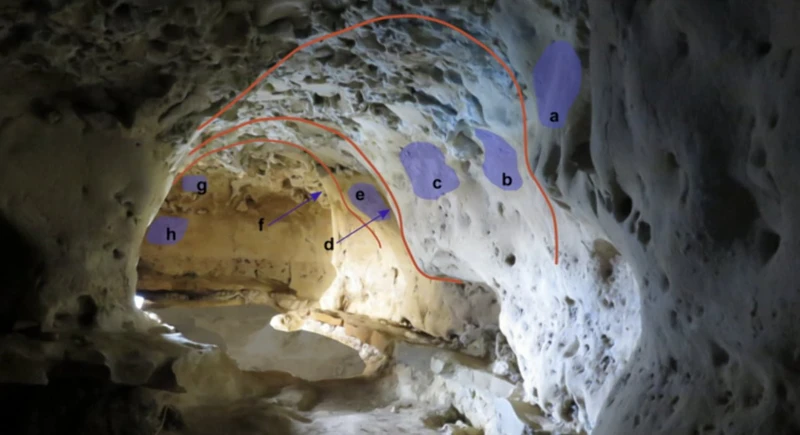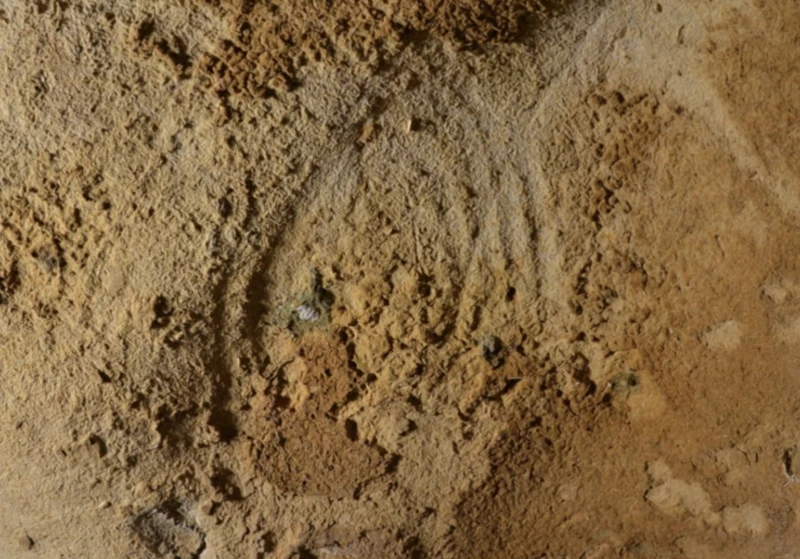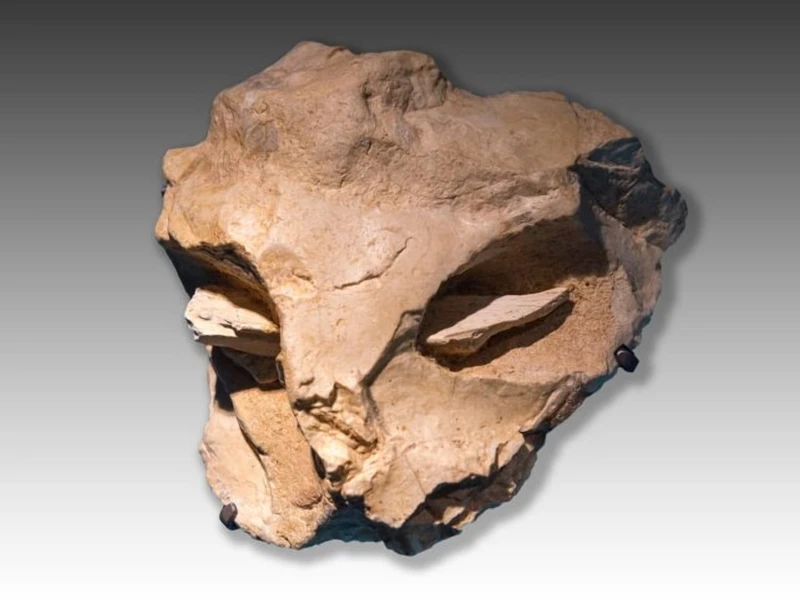The gallery of ancient cave markings, which scientists believe were created around 75,000 years ago, is likely the work of Neanderthals. A team of researchers analyzing the drawings found in the French cave of La Roche-Cotard claims that this is the earliest clear example of Neanderthal cave engravings ever discovered. They demonstrate that our closest relatives were also creative and had a desire for self-expression.

The appearance of the cave chamber containing fingerprints.
By determining the age of the sediment at the entrance of the cave, archaeologist Jean-Claude Marquet from the University of Tours in France and his colleagues found that the drawings were made approximately 51,000 to 57,000 years ago.
It was only when the entrance to the cave was discovered at the beginning of the 20th century that scientists were able to enter and uncover its ancient secrets. Findings indicate that Homo sapiens could not have created the engravings in the cave, as our ancestors arrived in Western Europe about 45,000 years ago. Marke and his colleagues state that fifteen years after the excavation at La Roche-Cotard was resumed, it was established that the drawings are over 57,000 years old. Furthermore, due to stratigraphy (a branch of geology that deals with determining the relative geological age of layered sedimentary and volcanic rocks), it turned out that they are likely even older—around 75,000 years. This fact makes this cave the oldest site with wall images in France, if not in all of Europe.
Recent data discovered in Lebanon confirms that Homo sapiens left the African continent and traveled to Western Europe earlier than experts previously believed. Although our distant ancestors could theoretically have visited the region where the cave is located, scientists believe that these early excursions into Europe largely bypassed the territory that is now France—possibly due to the resistance of Neanderthals, who were already inhabiting the region at that time.

On the cave wall, you can see round patterns, likely made by fingers.
Artifacts found in the La-Roche-Cotard cave and its vicinity indicate that Neanderthals lived along the banks of the Loire River between 100,000 and 65,000 years ago. The finger paintings they created on some of the cave walls during this 35,000-year period do not depict specific figures, such as animals or plants. However, to be honest, no known hominid (a member of the primate family that includes humans and great apes) — not even our own species — created representational art at that time. The oldest known drawings made by Homo sapiens or any other species were found on an island in Indonesia and are approximately 45,000 years old.
The beginning of the emergence of abstract art, such as that created using parallel lines or circles, is quite difficult to determine: it depends on which images experts will evaluate as “art.” Alongside some random scratches that may have been made by animals, researchers in the La Roche-Cotard cave have cataloged dozens of “elongated or dotted, spatially organized signs,” which appear to be the work of hominids.
The claw marks found on the walls are thinner, deeper, and V-shaped, unlike the smaller and U-shaped marks that correspond to the morphology of a fingertip or a similarly shaped tool. Marke and his team believe that the person who painted in this cave thousands of years ago scratched their images into the soft upper layer of porous rock, forming the drawings using “smooth, regular grooves.” Since then, thousands of years and weathering processes have taken their toll, but at one time, these markings were clear.
Part of the cave “art” consists of circular “strokes,” another shows triangular marks, and yet another particularly impressive “panel” is made up of numerous dots created by fingers. Analyzing the entire “gallery,” Marke and his colleagues suggest that these projects are more “graphic than functional.” They represent an “organized, thoughtful composition,” driven by “conscious design and intent.”

Triangular pattern of fingerprints on the cave wall
It cannot be said for sure whether they have any greater meaning. However, there is increasing evidence that Neanderthals may have been much more creative than we have traditionally thought. For example, a rather controversial object called the “Mask of La Roche-Cotard,” found outside a cave and dating back about 75,000 years, suspiciously resembles a face with eyes that appear to have been carefully carved on a flat flint plate. On the other hand, considering our tendency to see faces in patterns where there are none, this could be a misinterpretation.

La Roche-Posay Mask
However, considering the facts presented by experts, it becomes increasingly difficult to assert that Neanderthals were not artists to some degree. There is even evidence that they mixed red ochre paint as far back as 250,000 years ago, and representatives of the species Homo erectus were engraving abstract patterns on shells 500,000 years ago on the island of Java in Indonesia.
The question of whether this is a true form of art remains highly controversial; however, in archaeology, as in art, one should have a broad perspective. The study was published in PLOS ONE.
